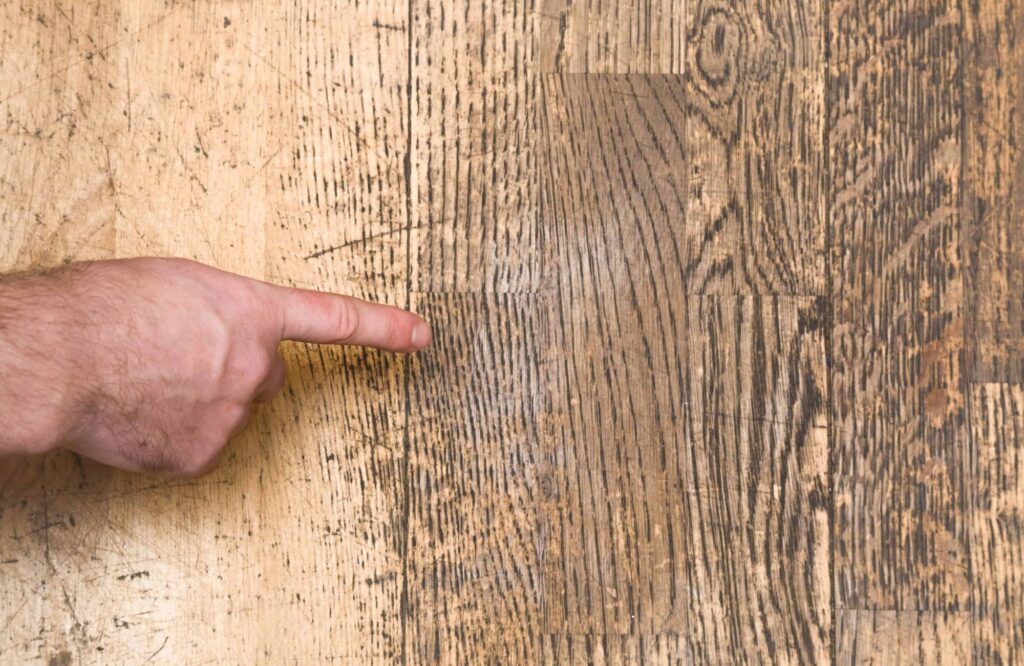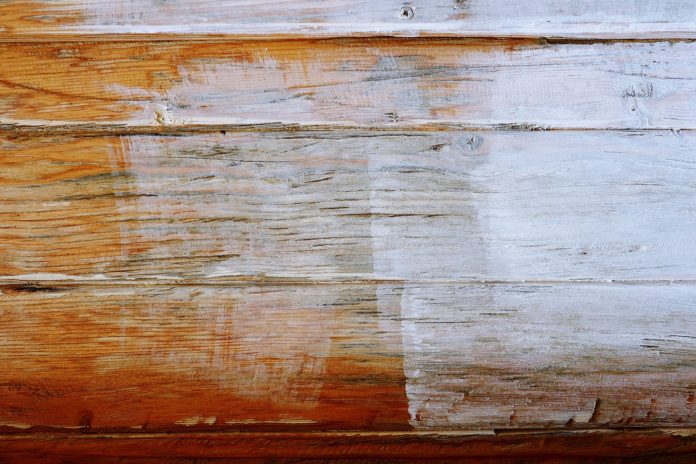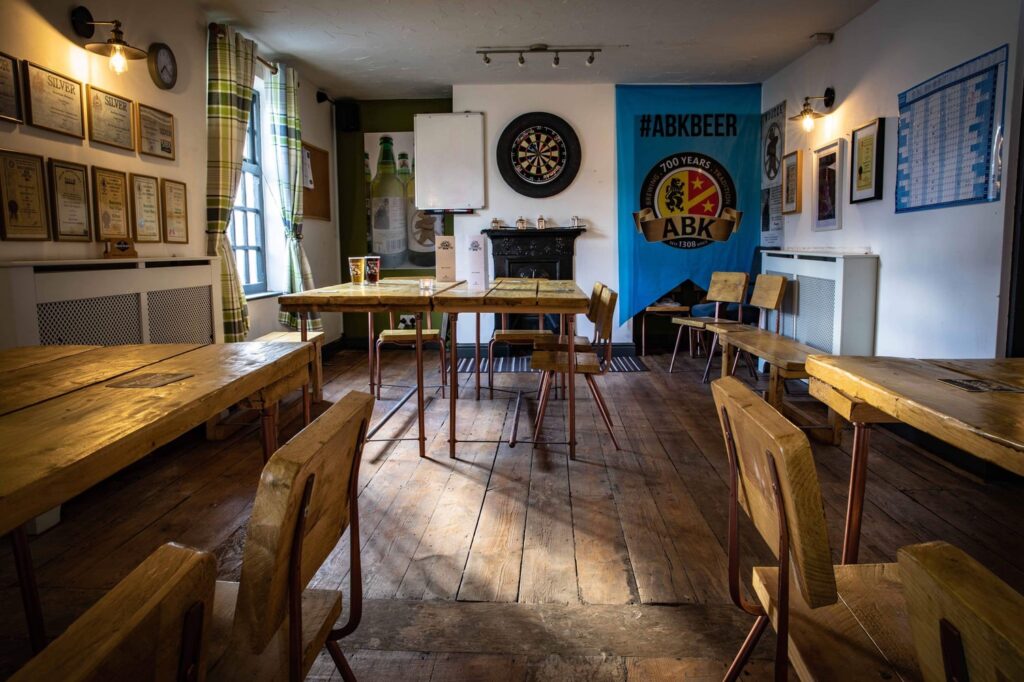Hardwood Flooring Dents And Scratches – Causes And Fixes
In its lifetime, any hardwood floor will experience denting and scratching at some point or another. Here are some tips on how to prevent unnecessary damage to your lovely hardwood as well as what do if if your hardwood floors are already dented and scratched.
Accidents happen. It’s a fact of life, especially when you have kids and pets. Sooner or later, you will drop a can of tomatoes on the floor, your kids will race down the hallway in dad’s office chair, or you’ll rush through the house to grab your forgotten purse without taking off your heels.
Causes of Hardwood Flooring Dents
Dents result from heavy items being dropped or dragged across the floor, which compresses the fibers in the wood and results in visible damage.
Moving day – You may be moving into a home that already has hardwood. Congrats! Still, moving in and out of a house creates a lot of hazards for scratching and dinging up a hardwood floor. Heavy boxes and furniture could be dropped, hefty appliances may be dragged across the floor, nobody takes off their work shoes coming in and out of the house, etc. Likely no one will be as careful with your floors as you are, so if you invite a moving crew to help, they probably won’t move in furniture and boxes as gingerly as you would. Plus, who knows how well the hardwood was taken care of by previous owners? You could be moving in and inheriting all of their floor dents.
Shoes –All shoes could pose a threat to your floor, but heavy work boots, cleats, and high heels are especially at risk of scratching your hardwood.

Want a Hardwood Floor?
This is so big, it has two sequels.
Of all the surfaces you can install, hardwood is one of the most beautiful. Nothing changes the look of a home so dramatically. With as many features as there are species available today, let me clear up some confusion and explain what makes one plank different from another.
SPECIES
Oak is the most readily available and affordable option. This is why you see it in more than 75% of homes with wood floors. Other species will offer a different look in terms of grain variation and hardness. Maple, the next most popular, has a more uniform appearance and is much harder than oak. Other popular species are walnut, hickory, birch and cherry.
Exotic species are not always in stock since they are mostly imported. The advantage with most exotics is that scratches don’t show. The color on top goes all the way through the board. When a traditional wood is scratched deep enough, it can reveal the raw wood beneath making the scratch stand out in stark contrast to a dark stain.
Pre-Finished vs Site-Finished
In the old days if you wanted hardwood, you knew that a regimen of waxing was necessary to maintain protection and shine. This became obsolete with the advent of polyurethane coatings. Much like clear coat on a car, polyurethane is a translucent coating that is durable and adds shine. Pre-finished floors will usually have 7-12 layers applied at the mill with the last layer fortified with aluminum-oxide to add additional wear protection.
Gloss Level and Stain
This is a matter of preference and does not affect the level of protection you get. It’s purely aesthetic but there are a few things know:
Darker colors can show more scratches and dents than light ones.
High gloss finishes can show more dents and scratches than low gloss ones.

Direction Of Hardwood Flooring
It’s time to change your flooring and upgrade to beautiful new hardwood. But before selecting the wood, ordering it and scheduling the installation, there’s an important thing to figure out–which direction should you have your hardwood laid? What might’ve seemed like an easy decision at first, now can seem overwhelming since you’ll be living with it for a long time. Not to worry, the direction you choose depends on different factors that we will break down for you.
The most common floor pattern is straight, also called vertical. To achieve this pattern, hardwood flooring planks are installed parallel to each other along with the length or width of your room. This classic pattern is used to create simple and even contemporary designs, enhancing the original look of the hardwood floor. Since this is the most straightforward (yes, pun intended) to install, it’s also the least expensive. Other patterns can take longer to install and need extra wood making them a bit more costly.
This is another common floor pattern. If your room is narrower than long, it can end up feeling closed in. Laying your hardwood flooring horizontally is a good way to combat this problem. This draws the eye from side to side, instead of down the length of the room. Just like a horizontally-striped shirt can make people look wider than they are, horizontal stripes created by the floor boards in the room can do the same thing.
In the herringbone pattern, wood planks are laid in a diagonal kind of zig zag pattern. This pattern can be laid out in the traditional pattern or with square modules to look like a parquet design.
This direction will add a touch of elegance to your space without drifting too far away from the traditional straight direction. The hardwood flooring boards are installed parallel to each other but laid at a 45 degree angle to the walls.

Pros and Cons of Hardwood Flooring You Should Know
If you’re looking out for flooring that suits your budget and gives that rich feel to your feet, then wood is the option that always stands out. The natural beauty of wood and its warmth attracts us to dream of having a house with hardwood floors.
If you are looking out for a style that is both versatile and blends with every type of decor, then wood flooring is the best option. It gives a lot of warmth and character to both traditional and modern homes. Whether you are using wood flooring for your office or residential space, it is a classy and reliable choice for both
Advantages of Hardwood Flooring
Even though the pricing might be slightly on the higher side during initial investment, but with proper maintenance, it can last you for more than a lifetime. Whereas, the regular carpet flooring, linoleum flooring or the laminate ones tend to get damaged too soon, due to wear and tear.
A long-term investment
Wood flooring tends to last for more than a hundred years if they are maintained well. They might seem like a big investment initially, but you don’t need to replace them every 10 or 20 years like the other types of flooring. It also provides a good return on investment, as the value of wood flooring continues to increase with time.
Variety
When your opting for wood flooring you will be presented with a wide array of choices. You can select one depending on your budget and availability. Not even a single plank has the same shade or color, which makes it more authentic while enhancing its aesthetic appeal. If you want then you can also stain them when you get bored of the same color. You could also mix and match the woods that will give the flooring an interesting look.

wood flooring care guide
The closest thing to solid wood flooring, engineered wood will give you a classically high end finish, a luxurious feel underfoot and timeless styling. Made from layers of timber boards, topped with a real hardwood veneer, engineered wood flooring is versatile, easy to install and looks simply stunning wherever it is fitted. Keep it looking its absolute best by caring for it in the right way. We’ve pulled together this great care guide, packed with expert hints and tips on cleaning and maintenance to help you.
care tips for wood flooring
Use a flat bottomed mop rather than a traditional stringy mop head as it won’t dribble water in the same way reducing the risk of surface water accumulating.
A dry microfiber dust mop can be used to pick up dirt and debris from the floor.
To ensure you don’t damage the surface, never use harsh chemicals or abrasive materials to clean your engineered wood flooring.
cleaning your wood flooring
Keeping your engineered wood flooring dirt-free
If possible, sweep or vacuum your engineered flooring daily. Use either a vacuum cleaner with a soft flooring attachment, or a broom.
Always vacuum or sweep an engineered wood floor before washing – this removes most of the dust and grit so avoids scratching. Alternatively a dry microfiber dust mop can be used to pick up dirt and debris from the floor.
Using cleaning products on engineered wood
It’s important to take care of your engineered wood flooring. While regular cleaning will keep your floor looking its best, there are some chemicals and materials to avoid.
Never use wax-based cleaners or harsh detergents on your engineered wood flooring. Always check the label of any products you buy to make sure they are safe to use on engineered wood flooring.
Abrasive materials, such as steel wool, should not be used to clean engineered hardwood flooring. These will scratch the surface and destroy the solid wood flooring appearance.
Always finish cleaning by rinsing your engineered wood flooring with clean water.